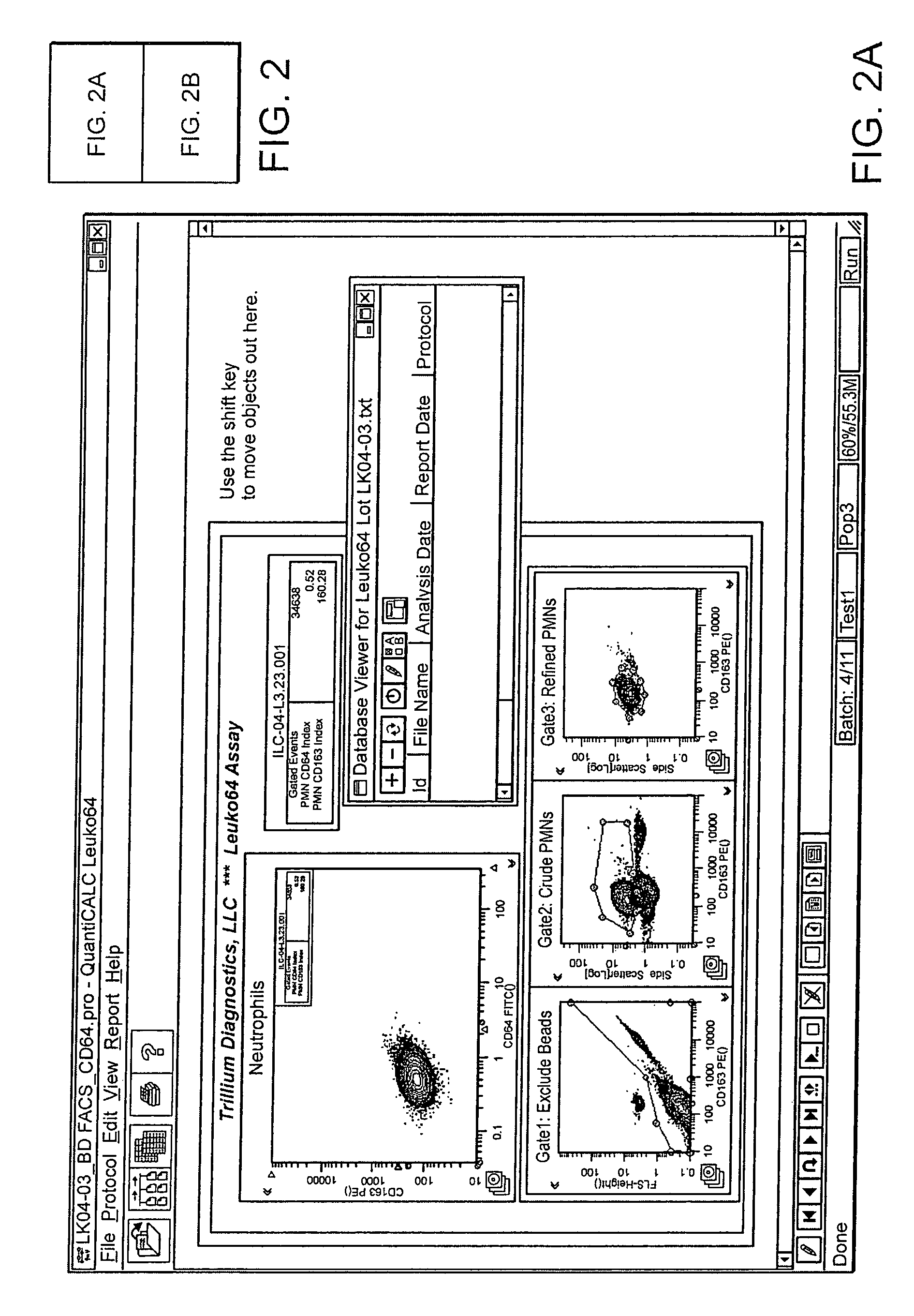Software integrated cytometric assay for quantification of the human polymorphonuclear leukocyte FcγRI receptor (CD64)
a polymorphonuclear leukocyte and software-integrated technology, applied in the field of cell surface antigens and expression quantification, can solve the problems of lack of specificity, cellular diagnostic parameters are typically problematic, and little has changed to improve diagnosis and therapeutic monitoring, so as to reduce the spread of antibiotic resistance of bacteria, improve diagnosis, and improve the effect of therapeutic monitoring and managemen
- Summary
- Abstract
- Description
- Claims
- Application Information
AI Technical Summary
Benefits of technology
Problems solved by technology
Method used
Image
Examples
example 1
Leukocyte CD64 Assay
The method for of flow cytometric analysis of blood samples for PMN CD64 is outlined briefly, and provided in detail by Davis et al [34-37, 40, 52, 53, 58, 59]. The current procedure for flow cytometric CD64 staining and analysis is as follows:
Trillium Diagnostics Leukocyte CD64 Assay Staining Procedure
[0037]1 Dilute the 10× Trillium Lyse (Reagent B) 1:10 by mixing 1 part of the concentrated Reagent B with 9 parts filtered distilled water. Make a volume sufficient for anticipated number of tests (1.0 mL is required for each sample). The final pH of the diluted Reagent B should be 7.40±0.02; adjusted with NaOH or HCl if necessary. Diluted or 1× Trillium Lyse is stable for 1 week at room temperature (20-26° C.) or 30 days at 2-8° C.[0038]2 Diluted lyse solution must be between 20° C. and 37° C. when used. Cold solution may result in poor lysis.[0039]3 Aliquot 50 μL of Leuko64 Reagent A into a 12×75 mm polystyrene tube.[0040]4 Aliquot 50 μL of mixed anticoagulated b...
PUM
| Property | Measurement | Unit |
|---|---|---|
| time | aaaaa | aaaaa |
| time | aaaaa | aaaaa |
| volume | aaaaa | aaaaa |
Abstract
Description
Claims
Application Information
 Login to View More
Login to View More - R&D
- Intellectual Property
- Life Sciences
- Materials
- Tech Scout
- Unparalleled Data Quality
- Higher Quality Content
- 60% Fewer Hallucinations
Browse by: Latest US Patents, China's latest patents, Technical Efficacy Thesaurus, Application Domain, Technology Topic, Popular Technical Reports.
© 2025 PatSnap. All rights reserved.Legal|Privacy policy|Modern Slavery Act Transparency Statement|Sitemap|About US| Contact US: help@patsnap.com



